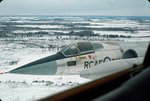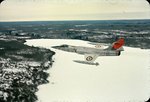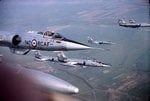CharlesBronson
Senior Master Sergeant
The most impressive part of that video, CB, was that the little stubby winged F-104 could actually achieve 54,000ft altitude
Using the calculator that gives me 16459 meters, yes, it is amazing for such loaded tiny aircraft, even a F-104 detractor like me had to recognize that. Pure engine power I guess.





